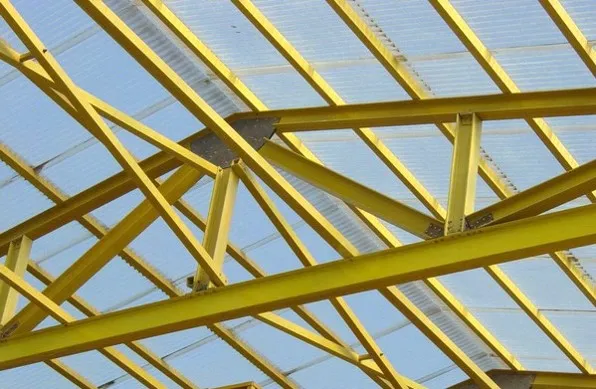loading...
- No. 9, Xingyuan South Street, Dongwaihuan Road, Zaoqiang County, Hengshui, Hebei, China
- admin@zjcomposites.com
- +86 15097380338
- Welcome to visit our website!
Alternative Solutions for Flooring with Mesh Grating Options for Enhanced Durability and Safety
Understanding Floor Mesh Grating Applications, Benefits, and Design Considerations
Floor mesh grating is a versatile material commonly used in various industrial and commercial settings. Made from a series of parallel bars and cross rods, this type of grating provides a durable solution for flooring, walkways, and platforms, particularly in environments requiring strength and safety. This article explores the applications, advantages, and design considerations of floor mesh grating.
Applications of Floor Mesh Grating
Floor mesh grating finds utility across numerous sectors. One of its most prominent applications is in industrial plants and manufacturing facilities, where heavy machinery and equipment are prevalent. The open design allows for the easy passage of air, light, and liquids, which is crucial in environments that require effective drainage, such as waste treatment facilities and food processing plants.
Additionally, floor mesh grating is widely used in commercial settings. Retail spaces often employ this type of grating to create visually appealing display areas while ensuring safety. It can be found in fire escapes and emergency exits, providing a slip-resistant surface that minimizes the risk of accidents.
Moreover, architectural applications of floor mesh grating have become increasingly popular. Modern designs incorporate it into buildings for aesthetic appeal, acting as a functional yet stylish surface. Architects appreciate its ability to combine strength and lightweight properties, allowing for innovative structures that adhere to safety standards while maintaining an appealing design.
Benefits of Floor Mesh Grating
The advantages of floor mesh grating are numerous. First and foremost, its structural integrity ensures longevity and safety. Made from materials such as steel, aluminum, or fiberglass, these gratings can withstand heavy loads, making them ideal for industrial usage. The grating’s design also allows it to expand and contract without breaking, further enhancing its durability.
Another significant benefit is the open design, which promotes safety. The gaps in the mesh reduce the accumulation of water and debris, minimizing slip hazards. This characteristic is particularly crucial in environments that may be wet or have spills, such as kitchens or chemical plants.
floor mesh grating

Furthermore, maintenance is practical with floor mesh grating. The open structure means that dust, dirt, and other particles can fall through, reducing cleaning time and effort. In cases where cleaning is required, the process is straightforward, ensuring that safety and hygiene standards are easily maintained.
In terms of installation, floor mesh grating is relatively simple to fit. It can be customized to meet specific requirements, allowing it to be adapted for various sizes and configurations. This flexibility makes it an attractive option for both new constructions and renovations.
Design Considerations
When selecting floor mesh grating, several design considerations must be taken into account. The material choice is paramount, as it influences strength, corrosion resistance, and overall performance. For instance, stainless steel is ideal for corrosive environments, while aluminum may be better suited for lightweight applications.
Another factor is mesh size and load capacity. The spacing between the bars must be adequate to support the intended use while preventing small objects from falling through. Choosing the right load capacity ensures safety and longevity, allowing for the safe movement of personnel and equipment.
Additionally, the surface finish should not be overlooked. Options such as slip-resistant coatings can enhance safety in high-traffic areas, further reducing accident risks. Custom finishes can also enhance the aesthetic qualities of the grating, making it more suitable for visible locations in commercial settings.
Lastly, compliance with safety regulations is essential. Different industries have various standards that flooring materials must meet. It is crucial to ensure that the selected floor mesh grating adheres to the relevant safety guidelines to avoid potential liabilities.
Conclusion
In conclusion, floor mesh grating is a highly effective flooring solution that offers numerous benefits across various industries. Its applications range from industrial environments to architectural designs, highlighting its versatility and functionality. With its robust structure, safety features, and easy maintenance, floor mesh grating continues to be a popular choice for both safety and aesthetic purposes. When considering this material, understanding its advantages and design considerations ensures the best outcomes for any project. As industries evolve, the demand for innovative and reliable flooring solutions like floor mesh grating will undoubtedly continue to grow.
-
The Rise of FRP Profiles: Strong, Lightweight, and Built to LastNewsJul.14,2025
-
SMC Panel Tanks: A Modern Water Storage Solution for All EnvironmentsNewsJul.14,2025
-
GRP Grating: A Modern Solution for Safe and Durable Access SystemsNewsJul.14,2025
-
Galvanized Steel Water Tanks: Durable, Reliable, and Ready for UseNewsJul.14,2025
-
FRP Mini Mesh Grating: The Safer, Smarter Flooring SolutionNewsJul.14,2025
-
Exploring FRP Vessels: Durable Solutions for Modern Fluid HandlingNewsJul.14,2025
-
GRP Structures: The Future of Lightweight, High-Performance EngineeringNewsJun.20,2025
